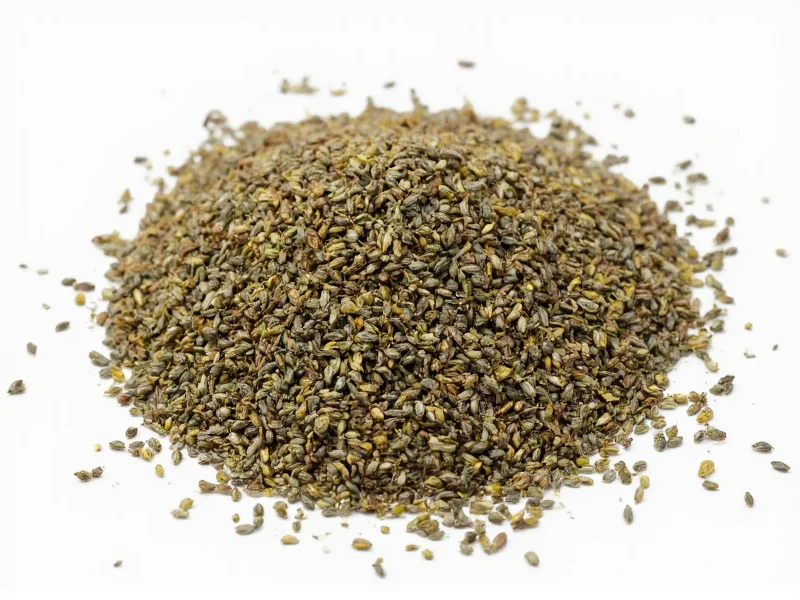Understanding Lemon Thyme Seeds
Lemon thyme (Thymus citriodorus) is a perennial herb prized for its distinctive citrus aroma and flavor. Unlike common thyme varieties, lemon thyme contains higher concentrations of citral, giving it that characteristic lemon scent without actual citrus content. When working with lemon thyme seeds, gardeners should understand these key characteristics:
Lemon thyme seeds are exceptionally small—approximately 1mm in diameter—with a dark brown to black coloration. Each seed packet typically contains hundreds of seeds due to their minuscule size. These seeds maintain viability for 2-3 years when stored properly in cool, dry conditions, though germination rates decline significantly after the first year.
Optimal Planting Conditions for Lemon Thyme Seeds
Successful germination of lemon thyme seeds depends on precise environmental conditions. Understanding when to plant lemon thyme seeds is crucial for gardeners in different climate zones.
| Climate Zone | Indoor Start Time | Outdoor Planting Time | Soil Temperature |
|---|---|---|---|
| USDA Zones 3-5 | 8-10 weeks before last frost | 2-3 weeks after last frost | 65-75°F (18-24°C) |
| USDA Zones 6-8 | 6-8 weeks before last frost | 1-2 weeks after last frost | 60-75°F (15-24°C) |
| USDA Zones 9-11 | 4-6 weeks before last frost | Fall or early spring | 55-70°F (13-21°C) |
Step-by-Step Guide to Planting Lemon Thyme Seeds
Follow these detailed steps for successful lemon thyme seed germination and growth:
1. Seed Starting Preparation
Use a sterile seed starting mix rather than garden soil to prevent damping-off disease. Fill seed trays or small pots, leaving ½ inch of space at the top. Moisten the mix thoroughly before planting—lemon thyme seeds require consistent moisture during germination but cannot tolerate waterlogged conditions.
2. Sowing Lemon Thyme Seeds
Due to their tiny size, lemon thyme seeds should not be buried deeply. The proper technique for how deep to plant lemon thyme seeds is critical:
- Surface sow seeds by sprinkling them evenly across the soil surface
- Cover with a very thin layer (⅛ inch) of seed starting mix or vermiculite
- Lightly mist with water to ensure good seed-to-soil contact
- Do not compact the soil—lemon thyme seeds need light for optimal germination
3. Creating the Ideal Germination Environment
Maintaining proper conditions during the lemon thyme seed germination time period determines success:
- Cover trays with a humidity dome or plastic wrap to maintain moisture
- Place in a warm location with indirect light (65-75°F/18-24°C)
- Check daily for moisture—keep consistently damp but not soggy
- Expect first sprouts in 14-21 days (some seeds may take up to 28 days)
Troubleshooting Common Lemon Thyme Seed Problems
Gardeners often encounter specific challenges when growing lemon thyme from seeds. Understanding these common problems with lemon thyme seeds helps prevent failure:
Poor Germination Rates
If your lemon thyme seeds aren't sprouting, consider these factors:
- Old seeds: Test seed viability by placing 10 seeds between damp paper towels in a warm location
- Incorrect temperature: Seeds outside the 65-75°F range germinate poorly
- Overwatering: Soggy soil causes seeds to rot before sprouting
- Insufficient light: While seeds need darkness initially, seedlings require bright light immediately after sprouting
Damping-Off Disease
This fungal disease causes seedlings to collapse at the soil line. Prevent it by:
- Using sterile seed starting mix
- Avoiding overwatering
- Providing good air circulation
- Watering from below rather than overhead
Transplanting and Ongoing Care
Once your lemon thyme seedlings develop their second set of true leaves (typically 4-6 weeks after germination), they're ready for transplanting. Proper technique for transplanting lemon thyme seedlings ensures healthy growth:
- Harden off seedlings gradually over 7-10 days before moving outdoors
- Choose a location with at least 6 hours of direct sunlight daily
- Amend garden soil with sand or perlite for optimal drainage
- Space plants 12-18 inches apart to allow for mature growth
- Water deeply but infrequently once established
Lemon thyme thrives in poor, rocky soils where many other herbs struggle. Avoid rich soils and excessive fertilizer, which can diminish the plant's essential oil concentration and reduce its characteristic lemon flavor. In containers, use a pot with excellent drainage and a soil mix containing 30% perlite or pumice.
Harvesting and Using Your Homegrown Lemon Thyme
Begin harvesting lemon thyme once plants reach 6 inches in height, taking no more than one-third of the plant at a time. For maximum flavor intensity, harvest in the morning after the dew has dried but before the heat of the day.
Lemon thyme works beautifully in:
- Fish and poultry dishes
- Lemon-thyme infused oils and vinegars
- Herbal teas and tisanes
- Homemade soaps and lotions
- Ornamental garden borders
Unlike common thyme, lemon thyme maintains its distinctive citrus aroma even when dried, though fresh use provides the most vibrant flavor profile. Store dried lemon thyme in airtight containers away from light and heat to preserve essential oils.











 浙公网安备
33010002000092号
浙公网安备
33010002000092号 浙B2-20120091-4
浙B2-20120091-4